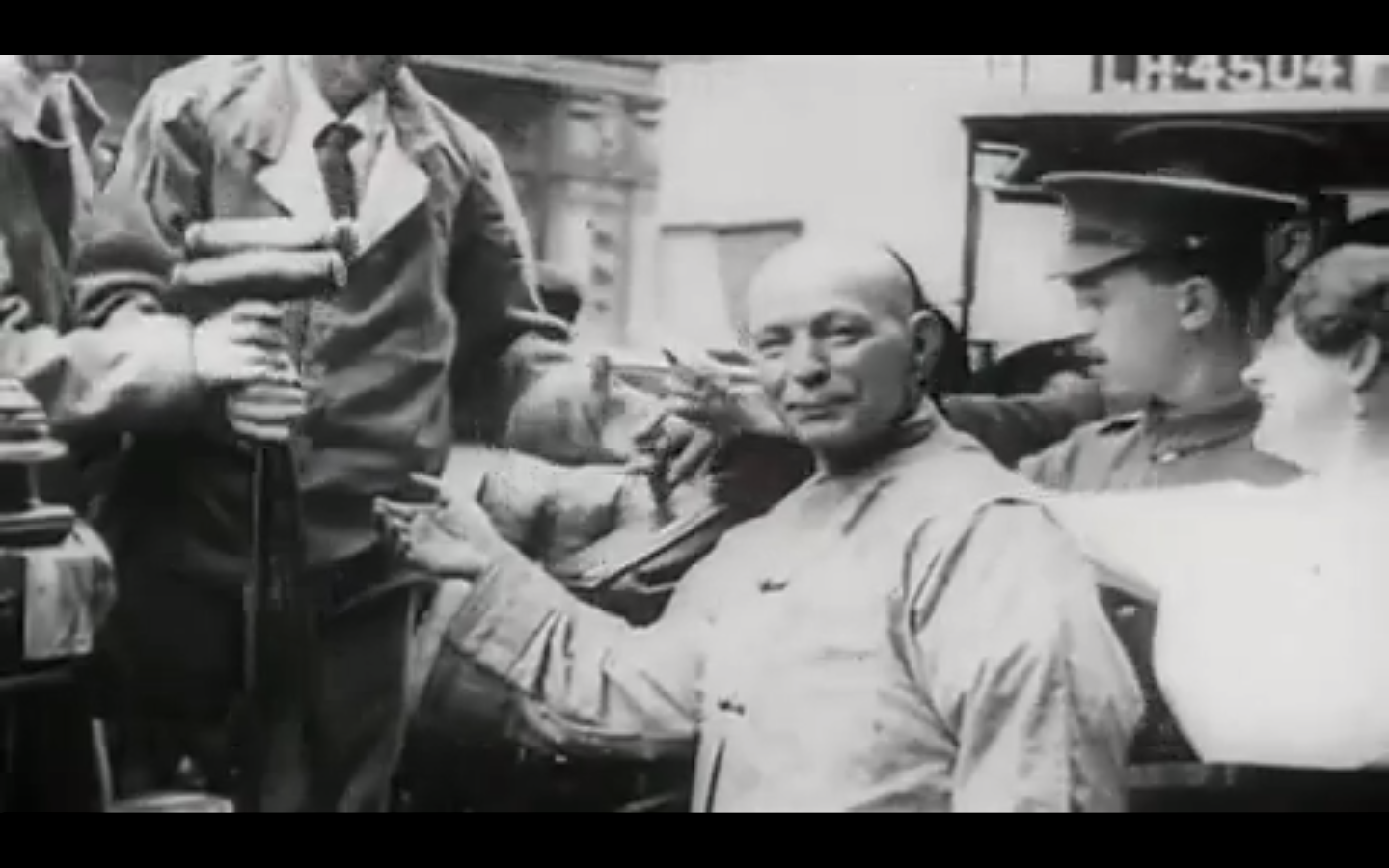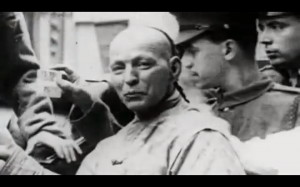Posted: June 22nd, 2012 | No Comments »
The latest book in the series, Asian Arguments, that I edit for Zed Books is now available in paperback. It’s an interesting study of a little known group of migratory women workers moving from Burma to Northern Thailand’s manufacturing areas…
Ruth Pearson and Kyoko Kusakabe
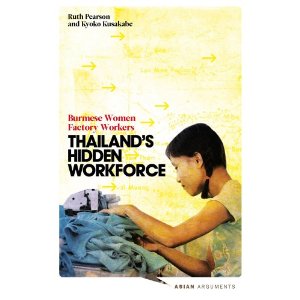
Millions of Burmese women migrate into Thailand each year to form the basis of the Thai agricultural and manufacturing workforce. Un-documented and unregulated, this army of migrant workers constitutes the ultimate “disposable” labour force, enduring grueling working conditions and much aggression from the Thai police and immigration authorities. This insightful book ventures into a part of the global economy rarely witnessed by Western observers. Based on unique empirical research, it provides the reader with a gendered account of the role of women migrant workers in Thailand’s factories and interrogates the ways in which they strategize about their families and their futures.
‘The authors give a voice to a part of Thailand’s workforce invisible to many Thais, and to consumers across Asia and around the world who buy the cheap goods they produce. That voice is authentic, and paired with sound analysis of the issues raised.’
Chris Hogg, correspondent BBC Asia, Shanghai
‘The labels on your clothes do not say ‘Made by Burmese migrant women in Thailand’, but once you have read this book you will carry that information with you. Many thanks to the authors for exposing these conditions.’
Jackie Pollock, director, MAP Foundation, Thailand
‘This book reveals the hidden face of Thailand’s industrial and migration policies by giving visibility and voice to Burmese female migrants employed in the country’s ready-made garment and knitwear factories. The authors shine the spotlight, not only on the women’s work experiences on the factory floor, but also on the way they juggle care responsibilities for their children. It is a compelling story about ordinary women making hard decisions under precarious conditions as they live transborder lives.’
Professor Brenda Yeoh, National University of Singapore
About the Authors:
Ruth Pearson is Professor of International Development at the University of Leeds, UK. She has undertaken research on women’s work in the global economy, focusing recently on migrant workers and gendered globalisation, and has carried out empirical work in Latin America, including Mexico, Argentina, Bolivia and Cuba, as well as in Thailand and Europe. She has a particular interest in the intersections of women’s productive and reproductive roles and their implications for understanding globalisation and crisis in the contemporary economy.
Kyoko Kusakabe is Associate Professor of Gender and Development Studies in the School of Environment, Resources and Development at the Asian Institute of Technology, Thailand. Her research interests are centred on gendered mobility and migration in the Greater Mekong Subregion and the effect of regional economic integration on women’s work and employment. She has undertaken empirical work in Thailand, Laos and Cambodia and has a special interest in women and transborder trade.
Posted: June 22nd, 2012 | No Comments »
Every year Danwei lists the best blogs, commentaries and podcasts about China in all its aspects – this year’s list of Model Workers is quite extensive and I post here both to show off that China Rhyming was included and because if you’re looking at this blog then you probably want more China sources….click here
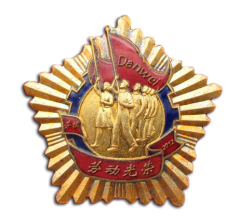
Posted: June 21st, 2012 | 1 Comment »
Back no a very cold and blustery March day earlier this year I went for a stroll around the scenes of Midnight in Peking in various parts of old Peking with Mary Kay Magistad of PRI’s The World…here’s the show she put together now online…

Posted: June 21st, 2012 | No Comments »
Funny how things come along. No sooner had I posted the shots yesterday of an opium raid in Shanghai in 1925 than I read in The New Yorker (June 25th 2012 edition) about Steve Martin who both has a massive collection of opium paraphernalia that sounds fascinating but was also a serious opium addict in Thailand hooked on 30 to 40 pipes a day. And now he’s apparently written a book on the subject, Opium Fiend – haven’t read it as it’s not out till the end of June – but thought it interesting enough to post.
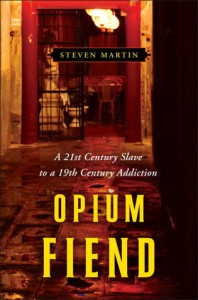
A renowned authority on the secret world of opium recounts his descent into ruinous obsession with one of the world’s oldest and most seductive drugs, in this harrowing memoir of addiction and recovery.
A natural-born collector with a nose for exotic adventure, San Diego–born Steven Martin followed his bliss to Southeast Asia, where he found work as a freelance journalist. While researching an article about the vanishing culture of opium smoking, he was inspired to begin collecting rare nineteenth-century opium-smoking equipment. Over time, he amassed a valuable assortment of exquisite pipes, antique lamps, and other opium-related accessories—and began putting it all to use by smoking an extremely potent form of the drug called chandu. But what started out as recreational use grew into a thirty-pipe-a-day habit that consumed Martin’s every waking hour, left him incapable of work, and exacted a frightful physical and financial toll. In passages that will send a chill up the spine of anyone who has ever lived in the shadow of substance abuse, Martin chronicles his efforts to control and then conquer his addiction—from quitting cold turkey to taking “the cure†at a Buddhist monastery in the Thai countryside.
At once a powerful personal story and a fascinating historical survey, Opium Fiend brims with anecdotes and lore surrounding the drug that some have called the methamphetamine of the nineteenth-century. It recalls the heyday of opium smoking in the United States and Europe and takes us inside the befogged opium dens of China, Thailand, Vietnam, and Laos. The drug’s beguiling effects are described in vivid detail—as are the excruciating pains of withdrawal—and there are intoxicating tales of pipes shared with an eclectic collection of opium aficionados, from Dutch dilettantes to hard-core addicts to world-weary foreign correspondents.
A compelling tale of one man’s transformation from respected scholar to hapless drug slave, Opium Fiend puts us under opium’s spell alongside its protagonist, allowing contemporary readers to experience anew the insidious allure of a diabolical vice that the world has all but forgotten.
Posted: June 20th, 2012 | No Comments »
Came across this silent newsreel from Kinograms: The Visual News of all the World. It’s from 1925 and includes footage of the Shanghai Municipal Police and the Shanghai Chinese police busting some opium den and then displaying the seized opium before burning it in special kilns.
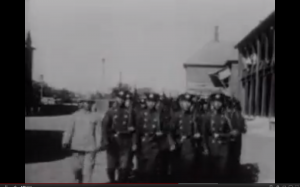 Shanghai Police march out of the barracks to go bust an opium den…
Shanghai Police march out of the barracks to go bust an opium den…
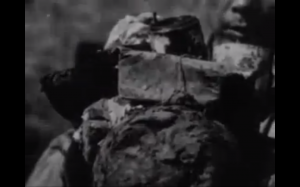 Seized bundles of dope…
Seized bundles of dope…
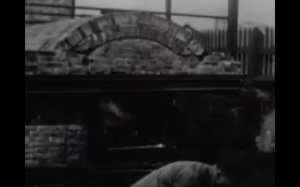 And into the kiln it goes to be burnt and destroyed…
And into the kiln it goes to be burnt and destroyed…
Posted: June 20th, 2012 | 2 Comments »
…as well as the title of Tim Luard’s new book, Escape From Hong Kong, on the exploits of Admiral Can Chek in WW2 (see previous plugs for his recent China events on this site), it was also the title of a pretty atrocious 1942 C-movie (or whatever is lower than a B-movie?) starring the mostly forgotten Leo Carillo, Andy Devine, Marjorie Lord, Frank Puglia and Chester Gan. OK, so it was all for the war effort with American vaudeville entertainers in Hong Kong for Pearl Habor. “JAPS TAKE COVER… when 3 American sharpshooters play rat-a-tat-tat on their skulls! “ wasn’t much of a tagline for the movie either but given that Pearl Harbor was December 1941 and the movie came out in May 1942 that’s not bad going!!
Excuse to stick the old poster up anyway…not an overly great attempt to artistically recreate the Hong Kong waterfront I have to say
And I’m going to stick my aviation ignorant neck out here too – those Jap planes bombing Hong Kong don’t look like the “light bombers” the Japanese used to bomb Hong Kong (I think) but rather British Lancaster’s (judging by the tails – but which anyway had four and not two engines). and it can’t be a Lancaster bombing a Jap ship because they didn’t have Lancaster’s in Hong Kong – right? But what do I know? Plane spotters feel free to ridicule me and my amateurish guesses!! (pics below anyway).
According to IMDB Tim Luard’s Escape from Hong Kong is in development – and would make a good film for a bit of Anglo-HK collaboration. I hope they use the same title.
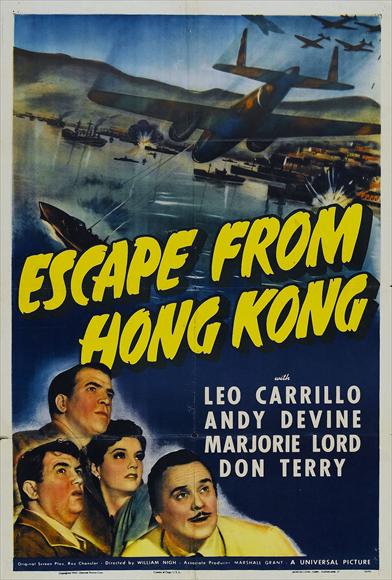
 Japanese light bombers with reconnaissance aircraft over Hong Kong…
Japanese light bombers with reconnaissance aircraft over Hong Kong…
 A British Lancaster with its distinctive tail
A British Lancaster with its distinctive tail
Posted: June 19th, 2012 | No Comments »
I know from previous posts on the recent new edition of Decadence Mandchoue that a lot of you like old Sir Edmund Backhouse so this event at Birkbeck College in London may be of interest…
Birkbeck Institute for the Humanities

A Queer Orientalism: Sex, Power and Cultural Difference in the ‘Memoirs’ of Sir Edmund Backhouse
20th June 6pm – 8pm Room B06 Birkbeck Main Building
Speaker: Morris Kaplan (BIH Visiting Fellow)
“A Queer Orientalism” traces the intersections among sex, power and cultural difference in the memoirs of Sir Edmund Trelawny Backhouse. Born in 1873, Backhouse lived in China from 1898 until his death in 1944; he co-authored two important, controversial studies of Chinese politics during and after the Boxer Rebellion. His two book-length manuscripts, “The Dead Past†and “Manchu Decadence,†tell the story of erotic and political adventures in fin du siecle Europe and in Beijing during the last decade of the Manchu dynasty. He places himself near the center of the court of the Dowager Empress during the years 1989-1908 and claims extensive interaction with her and with her most important advisors. Backhouse is virulently anti-British and positions himself as an anti-imperialist. Very learned in Chinese history and culture, he attempts to appropriate an indigenous tradition of same-sex love while holding onto a certain erotic privilege as a “foreign devilâ€. More fantasy than history, Backhouse’s “memoirs†display vicissitudes of desire and cultural interaction in a distinctively queer and oriental(ist) context.
First come first served – no registration.
Co-sponsored by BiGS
Julia Eisner, Manager
Birkbeck Institute for the Humanities
Birkbeck Institute for Social Research
Birkbeck, University of London
Malet Street
London WC1E 7HX
T:Â (0) 20 7631 6612
E:Â j.eisner@bbk.ac.uk
Posted: June 18th, 2012 | 1 Comment »
A while back in 2010 I posted a few times on the then famous magician Chung Ling Soo and recommended Jim Steinmeyer’s biography of him too. The interesting thing about Chung Ling Soo is that he was one of the most famous magicians of his day – originally an American called Bill Robinson he became Chung Ling Soo and passed himself of as Chinese, complete with robes, pigtail and interpreter (gibberish to English!) and made a mint doing magic tricks. All went well till 1918 when, at the Wood Green Empire, he did his famous bullet catching trick (complete with Boxer storyline and effects), it went wrong and he was shot dead on stage! Robinson went to great lengths not to be revealed as a white man, though it was known among the magician and music hall fraternities it was not widely known by his audience. He was so convincing to many (who probably had not, to be fair, had a lot of contact with Chinese people) that one woman who became infatuated with him rejected him as uninteresting when he appeared to her as a white guy in a suit!
Anyway, Chung Ling Soo is seen in posters and advertising ephemera from his shows – all highly stylised – and there are some photos but only one tiny bit of newsreel footage. It shows Robinson/Chung in London welcoming back heroes of the trenches from the war in 1915 and performing a benefit concert for them. It’s only 15 seconds long and on Youtube. I’ve screengrabbed a couple of stills below so you can decide for yourself whether he was convincing or not…
